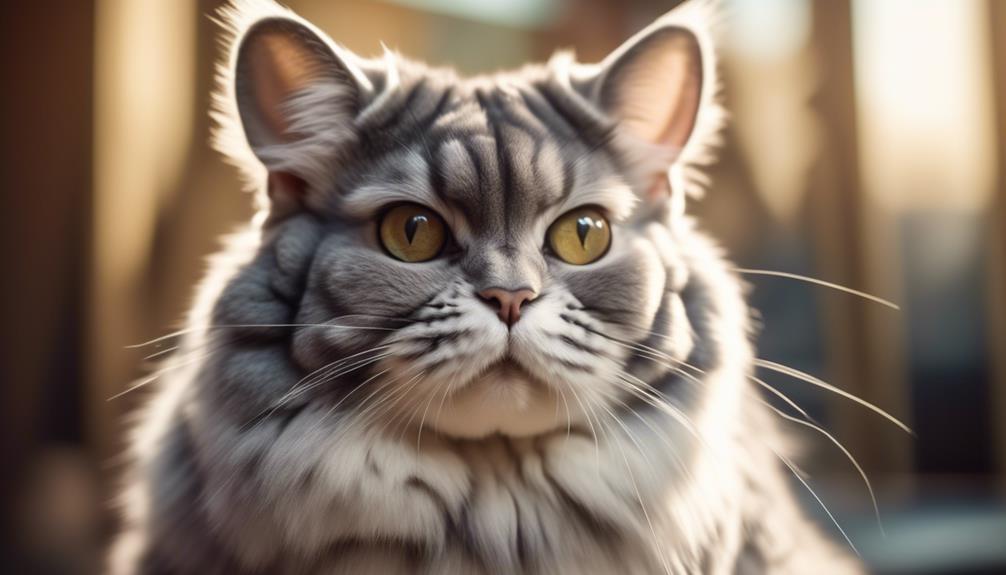
With their regal appearance and striking coats, Chinchilla cats have captivated the hearts of cat enthusiasts worldwide.
Originating from late 19th Century England, these felines are a part of the Longhair breed group, specifically the Persian variety.
With their medium size and luxurious pure white longhair coat adorned with unique silvery-green tipping, Chinchilla cats exude an air of elegance and sophistication.
But there is so much more to these captivating creatures than meets the eye.
This article will uncover their fascinating history, explore their size and breed group, and delve into the intricacies of their lifespan and coat description.
So, let us embark on this journey of discovering the enchanting world of Chinchilla cats.
Key Takeaways
- The Chinchilla cat breed originated in England in the late 19th century and is known for its luxurious pure white longhair coat with unique silvery-green tipping.
- When choosing a Chinchilla cat, it is recommended to prioritize adopting from rescue organizations or shelters and conduct thorough research when purchasing from a breeder to ensure ethical practices and prioritize health and temperament.
- Chinchilla cats require regular grooming to prevent matting and thrive in a quiet, easygoing environment. They are friendly and bond strongly with humans, enjoying gentle strokes and interactive play.
- Regular veterinary check-ups are important for Chinchilla cats, as they may be prone to dental issues, breathing problems in certain breeds, and kidney failure. Grooming sessions are necessary to maintain their long hair, and providing shade and fresh water is important during hotter months.
Origin and History
The origin and history of the Chinchilla cat breed can be traced back to late 19th century England.
The breed originated in 1882 and is believed to be named after the chinchilla animal due to its resemblance to its fur.
It resulted from a stray cat mating with a Persian cat, which produced a smoke-colored kitten named Chinnie.
The desire to produce a silver-colored coat led to the development of the Chinchilla breed.
Today, Chinchilla cats are known for their luxurious pure white longhair and unique silvery-green tipping.
They belong to the longhair breed group, specifically the Persian breed.
The Chinchilla breed has gained popularity due to its striking appearance and gentle temperament.
See another cat breed profile.
Colorpoint Shorthair Cat Breed
Size and Breed Group
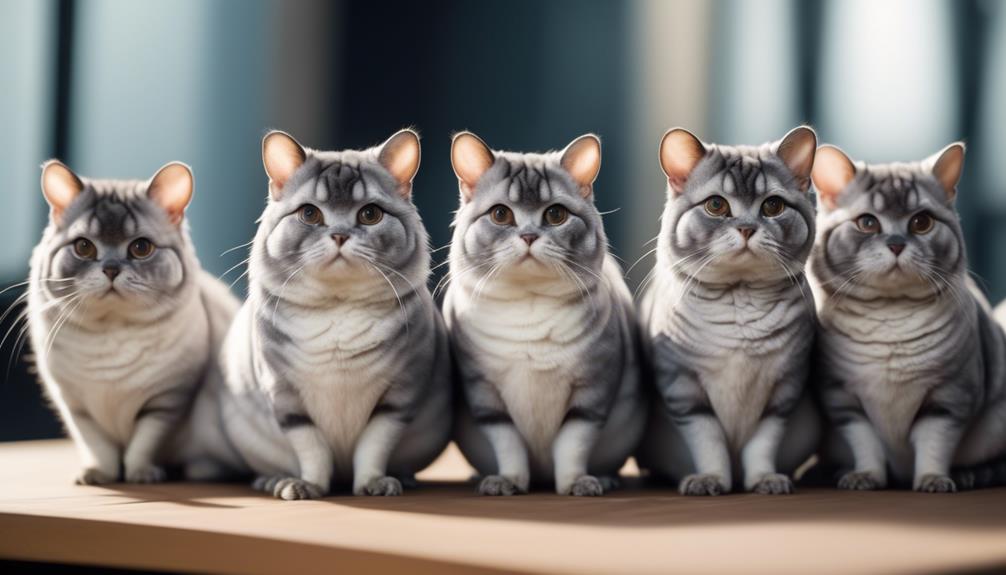
Characterized by its medium size and belonging to the longhair breed group, the Chinchilla cat is a stunning feline with a luxurious pure white longhair coat and a unique silvery-green tipping.
Weighing between 8-12 pounds, these cats have a well-proportioned body with a strong, muscular build.
They are not overly large or small but fall into the average range for cat sizes.
As part of the longhair breed group, Chinchilla cats are classified as Persians.
They share the same elegant and regal appearance as other Persian cats, with their distinctive long, flowing coats and expressive eyes.
The Chinchilla cat’s size and breed group contribute to its overall beauty and charm, making it a highly sought-after companion.
Lifespan and Coat Description
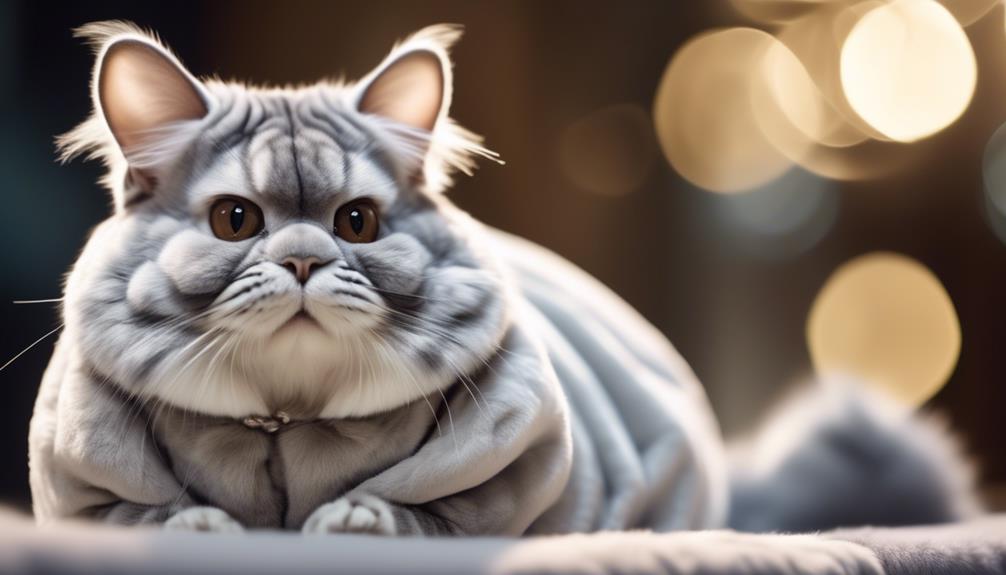
With an average lifespan of 12-15 years, the Chinchilla cat boasts a beautiful pure white longhair coat with a distinct silvery-green tipping.
This luxurious coat is one of the breed’s most striking characteristics.
The Chinchilla’s coat is soft, silky, and dense, giving it a plush appearance.
The silvery-green tipping adds a unique shimmering effect to the coat, creating an ethereal and elegant look.
Regular grooming is essential for maintaining the Chinchilla’s coat, as it helps prevent matting and keeps the fur in excellent condition.
Consult with a veterinarian for guidance on grooming frequency.
In hotter months, providing shade and fresh water is important to keep the Chinchilla comfortable and cool.
| Lifespan | Coat Description |
|---|---|
| 12-15 years | Pure white longhair with silvery-green tipping |
Choosing a Chinchilla Cat
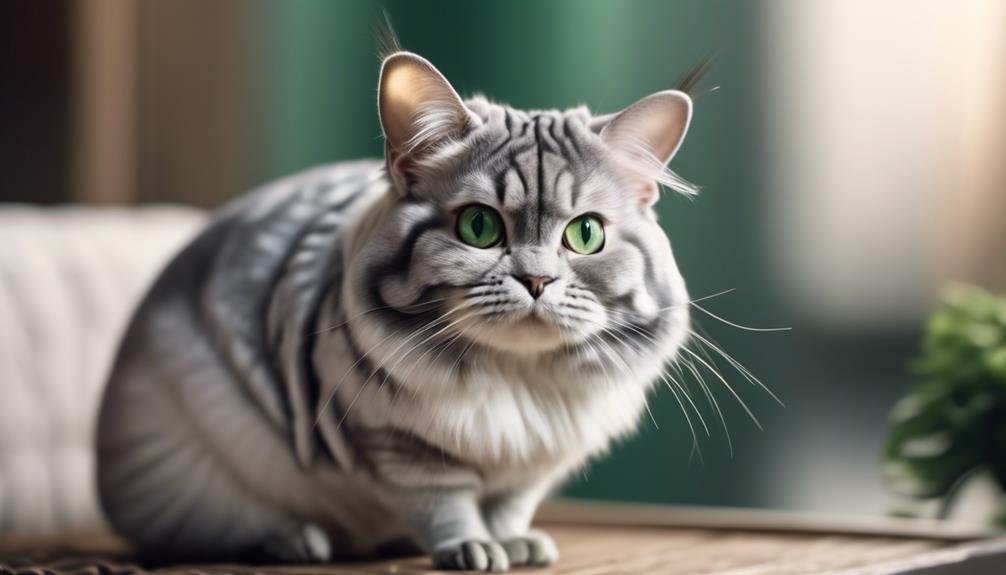
When selecting a Chinchilla Cat, it is important to prioritize adopting from rescue organizations or shelters.
These organizations provide a second chance for cats needing a loving home.
By adopting from a rescue organization or shelter, you are giving a Chinchilla Cat a loving home and promoting responsible pet ownership.
Before deciding, it is essential to conduct thorough research when purchasing from a breeder.
Look for breeders who prioritize the health and temperament of their cats.
Ensure that necessary health screenings have been conducted to prevent any potential health issues.
Discouraging unethical breeding practices that may put the cats’ well-being at risk is crucial.
Adoption and Breeder Considerations
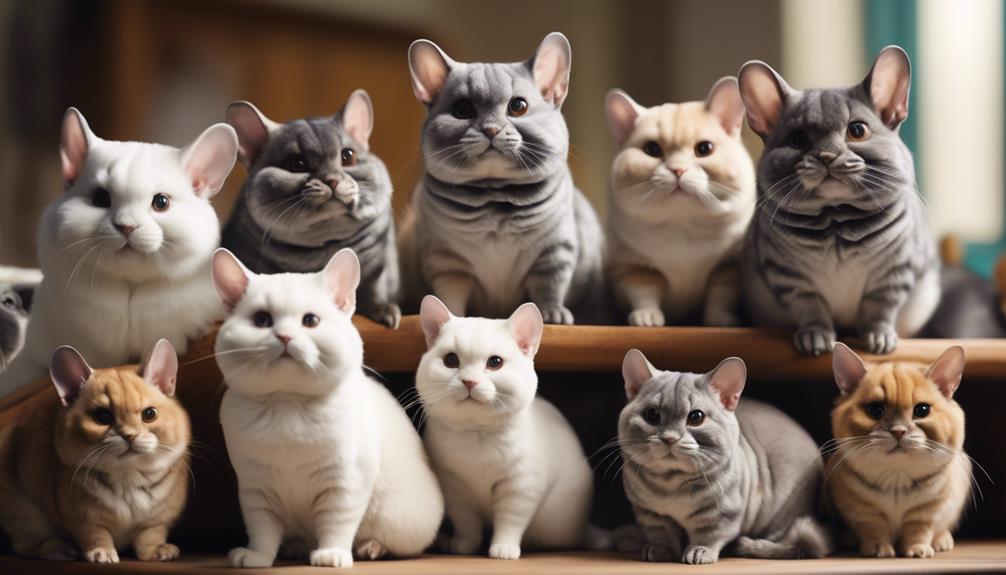
To make an informed decision when considering adoption or purchasing a Chinchilla Cat, it is crucial to evaluate the adoption process and breeder options available carefully.
Prioritizing adoption from rescue organizations or shelters is recommended, as it gives these cats a second chance at finding a loving home.
When purchasing from a breeder, conducting thorough research is essential.
Look for breeders who prioritize the health and temperament of their cats and ensure that necessary health screenings have been conducted.
It is important to discourage unethical breeding practices and support responsible breeders.
Chinchilla Cat Care
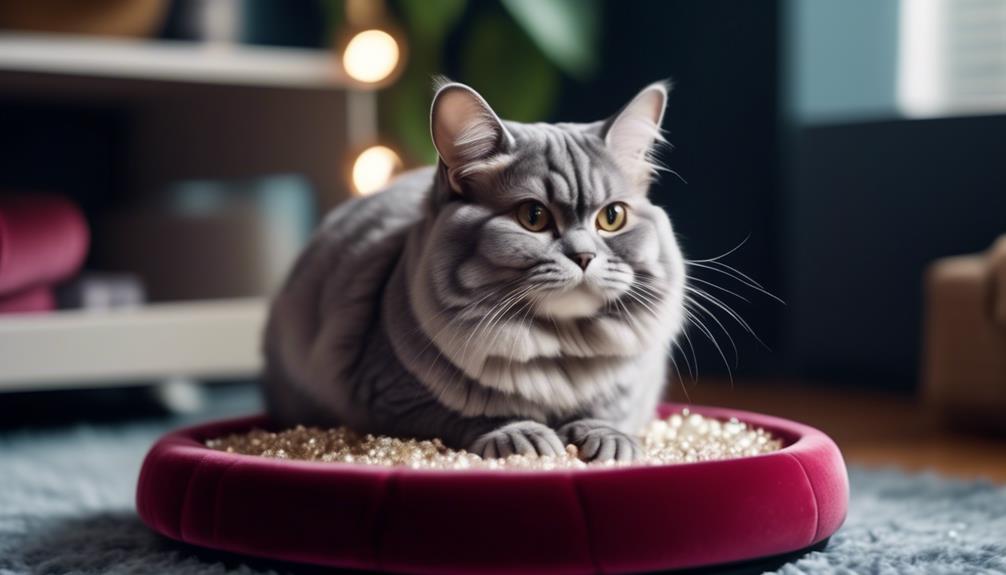
Regular grooming is essential for the proper care of a Chinchilla Cat.
With their luxurious pure white longhair and unique silvery-green tipping,
Chinchillas require regular grooming sessions to prevent matting and maintain their beautiful coat.
To paint a picture for the audience, here are two sub-lists to consider:
Grooming Care:
- Brush their coat regularly to prevent mat formation.
- Use a comb with wide teeth to remove tangles and knots gently.
- Please pay attention to the fur around their ears, armpits, and tail.
- Trim their nails regularly to prevent overgrowth and discomfort.
- Clean their ears and eyes using appropriate products recommended by a veterinarian.
Environmental Care:
- Provide a quiet and easygoing environment for their well-being.
- Create a comfortable space with cozy beds and hiding places.
- Engage in interactive play sessions to keep them mentally stimulated.
- Offer gentle strokes and affection to foster their friendly nature.
- Ensure access to fresh water and a shaded area during hotter months.
Grooming and Environment
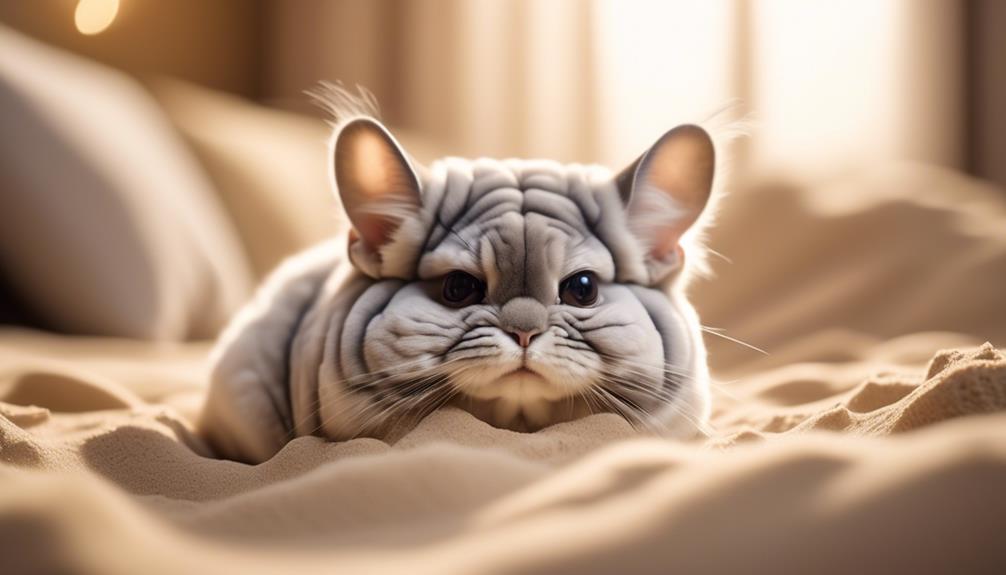
Maintaining proper grooming and providing a suitable environment are crucial aspects of caring for a Chinchilla Cat.
Due to their long hair, regular grooming sessions are necessary to prevent mat formation.
Grooming can be done by gently combing their luxurious pure white coat with a suitable brush.
Consulting with a veterinarian can help determine the recommended frequency of grooming sessions.
Chinchillas thrive in a quiet and easygoing environment, so it is important to provide them with a peaceful living space.
They enjoy gentle strokes and interactive play, forming strong bonds with their human companions.
Additionally, during hotter months, it is essential to ensure shade and fresh water to keep the Chinchilla Cat comfortable.
Sociability and Temperament
Chinchilla Cats are known for their friendly nature and serene temperament, making them delightful companions for those seeking a calm and affectionate feline.
Here are some key characteristics that contribute to their sociability and temperament:
Sociability:
- Chinchilla Cats form strong bonds with humans and enjoy their company.
- They thrive in a quiet and easygoing environment.
- Chinchillas are friendly and enjoy interactive play with their human companions.
Temperament:
- Chinchilla Cats have an adaptable and serene temperament.
- They are gentle and enjoy being stroked.
- Chinchillas are known to be affectionate and enjoy spending time with their owners.
Health and Coat Maintenance
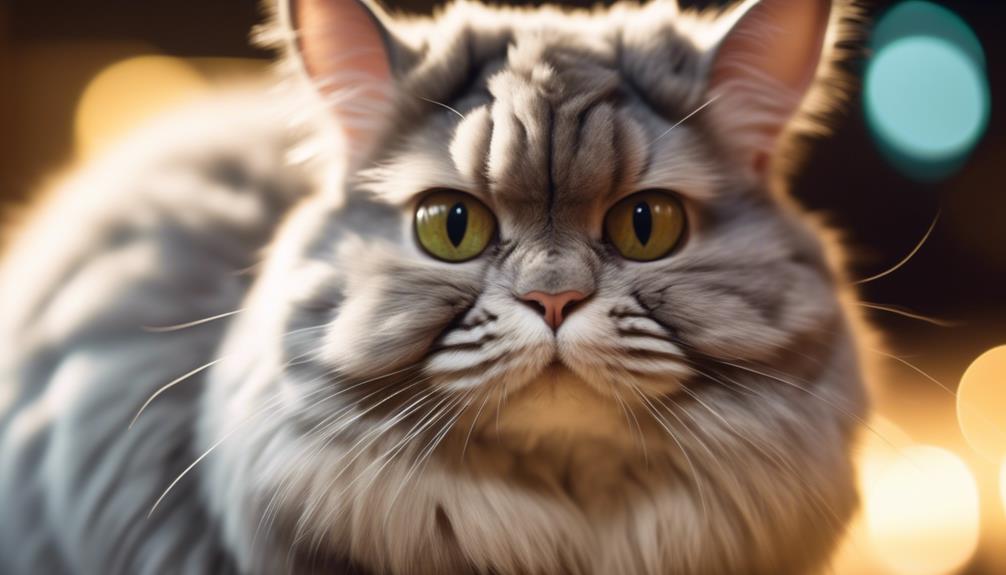
With their friendly nature and serene temperament, it is important to understand the necessary health and coat maintenance for Chinchilla Cats.
Regular veterinary check-ups are essential to ensure their overall well-being. Common health problems for Chinchilla Cats include dental issues, breathing problems in certain breeds, and kidney failure.
Early detection and prevention are key to maintaining their health.
Regarding coat maintenance, Chinchillas have a pure white color with a silver appearance, and their long hair requires regular grooming sessions to prevent mat formation.
Consult with a veterinarian to determine the appropriate grooming frequency.
Additionally, providing shade and fresh water during hotter months is crucial for their comfort and health.
| Health Care | Coat Maintenance |
|---|---|
| Regular veterinary check-ups | Regular grooming sessions |
| Dental care | Preventing mat formation |
| Addressing breathing problems | Consulting with a veterinarian |
| Kidney health | Providing shade and freshwater |
Frequently Asked Questions
Are Chinchilla Cats Hypoallergenic?
Chinchilla cats are not hypoallergenic.
While their luxurious longhair coat may reduce the amount of dander released into the environment, they still produce allergenic proteins that can trigger allergic reactions in sensitive individuals.
Do Chinchilla Cats Require a Specific Diet?
Chinchilla cats require a specific diet to ensure their overall health and well-being.
It is recommended to feed them high-quality cat food specifically formulated for their age, activity level, and any specific dietary needs.
How Often Do Chinchilla Cats Need to Be Groomed?
Chinchilla cats should be groomed regularly to prevent matting and maintain their luxurious long hair.
The frequency of grooming sessions can vary depending on the cat’s coat condition, but consulting with a veterinarian can guide the appropriate grooming schedule.
Are Chinchilla Cats Prone to Any Specific Health Issues?
Chinchilla cats may be prone to specific health issues, including dental problems, breathing difficulties in certain breeds, and kidney failure.
Regular veterinary check-ups, early detection, and prevention are essential for maintaining their health.
Can Chinchilla Cats Be Trained to Use a Litter Box?
Yes, chinchilla cats can be trained to use a litter box.
With consistent and positive reinforcement, they can learn to associate the litter box with elimination.
Patience and consistency are key in successfully training a chinchilla cat.
Conclusion
In conclusion, Chinchilla cats are elegant felines with a rich history and unique characteristics.
Their medium size, longhair coat and serene temperament make them sought-after companions.
When choosing a Chinchilla cat, it is important to prioritize health and temperament, whether adopting or purchasing from a breeder.
Regular grooming and providing a friendly environment are essential for their well-being.
By following proper health and coat care guidelines, Chinchilla cat owners can ensure the happiness and longevity of their beloved pets.




